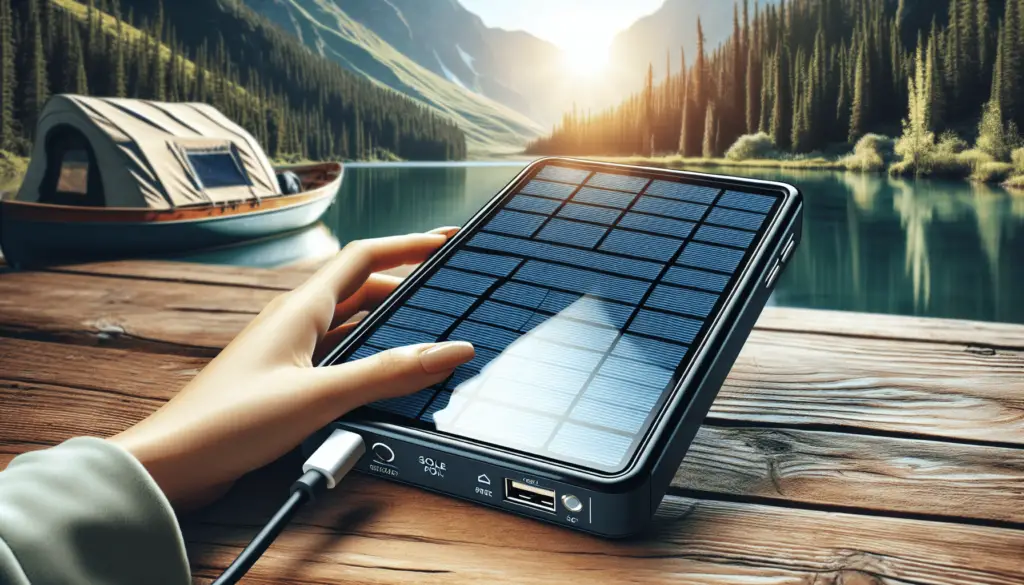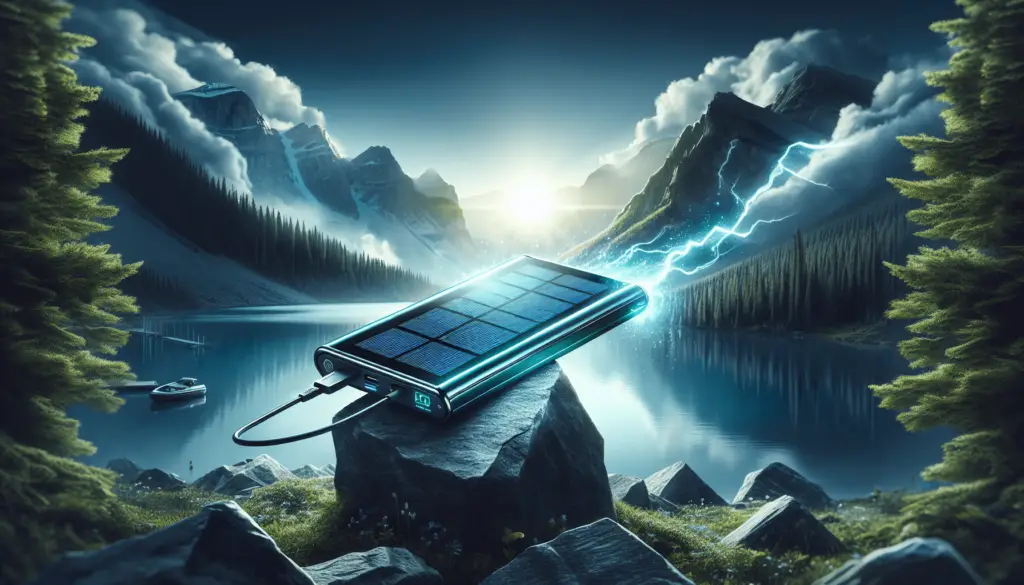Portable solar chargers are becoming increasingly popular for their convenience and sustainability. However, it is important to be aware of the do’s and don’ts when using these devices to ensure their optimal performance and longevity. From positioning the charger correctly to avoiding overcharging, understanding these essential guidelines will help you make the most out of your portable solar charger and keep your devices powered while on the go. So let’s explore the dos and don’ts for portable solar chargers to ensure you harness the sun’s energy efficiently and responsibly.

Do’s for Portable Solar Chargers
Choose a high-quality solar charger
When it comes to portable solar chargers, quality should be your top priority. Investing in a high-quality solar charger ensures that it will be durable, efficient, and reliable. Look for reputable brands that have a proven track record in producing top-notch solar chargers. Reading customer reviews and checking for certifications can also give you a good indication of the charger’s quality.
Consider the wattage and power output
The wattage and power output of a portable solar charger determine its charging speed and compatibility with different devices. Before making a purchase, assess your charging needs and the devices you plan to charge. Higher wattage and power output will ensure faster and more efficient charging. However, keep in mind that higher wattage chargers may be bigger and heavier, so consider the balance between power and portability.
Opt for a portable and lightweight design
One of the main advantages of portable solar chargers is their convenience. They are designed to be easily carried and used on the go, so it’s important to choose a model that is lightweight and compact. Look for chargers that are specifically marketed as portable, with features like foldable panels or a compact form factor. This way, you can easily carry it in your backpack or attach it to your gear when you’re traveling or exploring the great outdoors.
Look for multiple charging ports
In today’s world, we often have multiple devices that need charging at the same time. Therefore, it’s essential to choose a portable solar charger that offers multiple charging ports. This allows you to charge different devices simultaneously, saving you time and hassle. Whether you have a smartphone, tablet, or other USB-powered devices, having multiple charging ports ensures that you can keep all your devices powered up, even when you’re away from traditional power sources.
Ensure compatibility with your devices
Before purchasing a portable solar charger, check its compatibility with your devices. Not all chargers are compatible with every type of device, so it’s important to ensure that the charger you choose can support the devices you intend to charge. Some chargers may come with adapters or USB cables for different devices, while others may have specific voltage and current requirements. Make sure to read the product specifications and verify that it is compatible with your devices.
Check for built-in safety features
Safety should always be a priority when using any electronic device, and portable solar chargers are no exception. Look for chargers that have built-in safety features, such as overcharge protection, short-circuit protection, and temperature control. These features help protect your devices from damage and ensure the safety of both you and your devices. Investing in a charger with reliable safety mechanisms will give you peace of mind while using it.
Keep the solar panels clean and unobstructed
The efficiency of a portable solar charger depends on the cleanliness and unobstructed exposure of its solar panels to sunlight. Regularly clean the solar panels using a soft cloth or brush to remove any dirt, dust, or debris that may accumulate. This will optimize the charger’s performance and prevent any decrease in power output. Additionally, keep the panels unobstructed by placing the charger in an open area where it can receive direct sunlight without any shadows or objects blocking the panels.
Utilize the sun’s peak hours for charging
To maximize the charging efficiency of your portable solar charger, take advantage of the sun’s peak hours. Typically, these hours occur between 10 a.m. and 4 p.m. when the sun is at its strongest. During these hours, the solar panels can absorb more sunlight and convert it into electricity more effectively. Charging your devices during these peak hours will ensure faster and more efficient charging, allowing you to make the most of your solar charger’s capabilities.
Position the solar charger correctly
Proper positioning of your portable solar charger plays a crucial role in its overall performance. For optimum charging, orient the solar panels towards the sun, adjusting the angle as needed to ensure direct exposure. Some chargers come with adjustable stands or brackets that allow you to position them at the optimal angle. If your charger doesn’t have these features, placing it on a flat surface and adjusting its position throughout the day can help maximize its charging efficiency.
Regularly check and maintain the charger
To ensure the longevity and effectiveness of your portable solar charger, it’s important to regularly check and maintain it. Inspect the charger for any signs of damage or wear, such as frayed cables or loose connections. If you notice any issues, address them promptly to avoid further damage. Additionally, read and follow the manufacturer’s instructions for any specific maintenance recommendations. By taking proper care of your charger, you can extend its lifespan and enjoy reliable charging for years to come.
Don’ts for Portable Solar Chargers
Don’t expose the charger to extreme temperatures
While portable solar chargers are designed to withstand different weather conditions, extreme temperatures can negatively impact their performance and overall lifespan. Avoid exposing your charger to extremely hot or cold temperatures. High temperatures can cause overheating and damage to the internal components, while freezing temperatures can affect the battery life. Whenever possible, store your charger in a moderate temperature environment to prolong its lifespan.
Avoid leaving the solar charger in direct sunlight for prolonged periods
Although it may seem counterintuitive, it’s important to avoid leaving your portable solar charger in direct sunlight for extended periods when it is not in use. Continuous exposure to sunlight can lead to overcharging, which can be damaging to both the charger and your devices. It’s best to store your charger in a shady or indoor area when it’s not actively charging. This will help preserve its battery life and prevent any unnecessary wear and tear.
Don’t use the solar charger as a power source for high-energy devices
Portable solar chargers are designed to charge low-power devices like smartphones, tablets, and small electronics. They are not intended to power high-energy devices such as laptops, electric stoves, or power tools. The energy output of portable solar chargers is limited, and attempting to charge high-energy devices can overload the charger and potentially damage it. Always check the specifications and recommended usage of your charger to ensure you are using it properly and safely.
Avoid submerging the solar charger in water
Despite their durability, portable solar chargers are not waterproof or water-resistant in most cases. Water damage can severely affect their functionality and render them useless. Avoid submerging your charger in water or using it in wet environments where moisture can seep into the internal components. If you anticipate using your charger in wet conditions, look for a model that specifically states it is waterproof or water-resistant to ensure its longevity and safe usage.
Don’t bend or twist the solar panels
The solar panels on portable solar chargers are delicate and sensitive to physical stress. Avoid bending or twisting them, as this can damage the internal connections and impair their ability to generate electricity. Treat the panels with care and avoid any excessive force or pressure when handling or storing the charger. If you accidentally damage the solar panels, it can significantly impact the charger’s performance, resulting in reduced charging efficiency or even complete failure.
Avoid using the solar charger in dusty or sandy environments
While portable solar chargers are built to withstand outdoor conditions, dusty or sandy environments can be particularly detrimental. Fine particles like dust, sand, or dirt can accumulate on the solar panels and obstruct sunlight absorption. This can lead to decreased charging efficiency and may require frequent cleaning. If you anticipate using your charger in such environments, take extra precautions to protect the solar panels, such as using a cover or storing the charger in a sealed bag when not in use.
Don’t overload the charger with too many devices
It’s essential to avoid overloading your portable solar charger with too many devices. Each charger has a maximum power output, and exceeding this limit can result in slower charging times or inconsistent performance. To ensure efficient charging, refer to the charger’s specifications and guidelines regarding the maximum number of devices it can support simultaneously. Overloading the charger not only affects its efficiency but can also increase the risk of overheating or damage to the charger and devices connected to it.
Avoid charging devices with high energy consumption simultaneously
Similar to overloading the charger, charging multiple devices with high energy consumption simultaneously can strain the portable solar charger. Devices like laptops, cameras, or larger tablets require more power to charge, which may exceed the charger’s capabilities. To avoid potential damage and ensure effective charging, prioritize charging one high-energy device at a time or distribute the charging sessions throughout the day. This allows the charger to provide sufficient power to each device without overloading its capacity.
Don’t place the solar charger near strong magnetic fields
Portable solar chargers contain delicate electronic components that can be sensitive to magnetic fields. Placing your charger near strong magnetic fields, such as speakers, transformers, or large electrical appliances, can interfere with its performance and potentially damage the internal circuitry. To prevent any unwanted interferences or malfunctions, keep your charger away from strong magnetic sources and store it in a location free from potential magnetic disturbances.
Avoid storing the solar charger with a depleted battery
If you’re not planning to use your portable solar charger for an extended period, avoid storing it with a completely depleted battery. Lithium-ion batteries, commonly used in portable chargers, can degrade if left discharged for long periods. It’s recommended to store the charger with at least a partial charge to maintain the battery’s health. Refer to the manufacturer’s instructions for specific recommendations on storing the charger and its battery to ensure optimal performance when you need it.
By following these do’s and don’ts for portable solar chargers, you can make the most of your investment and enjoy the convenience of charging your devices anywhere, anytime. With the ever-increasing reliance on technology, having a reliable and efficient portable solar charger can be a game-changer, providing you with peace of mind and a continuous power source while you’re on the move. Remember to choose a high-quality charger, consider the wattage and power output, and prioritize portability and compatibility with your devices. With proper care and usage, your portable solar charger will be an essential companion for all your adventures.

